Grooming your feline friend is an essential part of pet care, but like all good things, can it be overdone? This article delves into the nuances of using a cat slicker brush and how to strike the perfect balance for your cat's coat health.
Key Takeaways:
- Over-brushing with a slicker brush can lead to skin irritation and damage to your cat's coat.
- Understanding the needs of different cat breeds and coat types is crucial for optimal grooming.
- Regular but moderate grooming with the right tools can help maintain your cat's coat and overall well-being.
Understanding Your Cat's Coat
Cats come in a variety of breeds, each with unique coat characteristics. Long haired cats, for instance, have a luxurious coat that requires more maintenance to prevent mats and tangles.
On the other hand, short haired cats have a sleek coat that might not need as much attention. Regardless of the length, a cat's fur is a protective barrier and plays a vital role in their overall health.
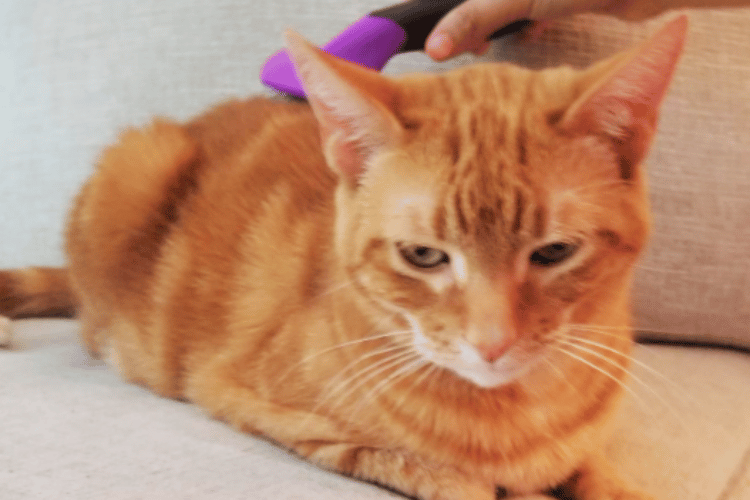
Regular grooming helps remove loose hairs and can prevent hairballs, which are a common issue in many cats. However, the type of brush and the frequency of grooming sessions are pivotal in keeping your cat's coat healthy without causing harm.
The Role of Slicker Brushes
Slicker brushes are a popular tool among pet owners for detangling and removing excess hair. They are typically designed with fine, short wires close together on a flat surface. While slicker brushes can be effective for removing matted fur and smoothing out the coat, they can also cause discomfort if not used correctly.
When it comes to grooming, the goal is to make it a positive experience for your cat. Gently brush in the same direction as the hair growth, and be careful not to pull or tug at the skin. This ensures that you're not only keeping the coat healthy but also reinforcing a bond with your feline friend.
Frequency Matters
The question of how often to brush your cat's fur is not a one-size-fits-all answer. Frequent grooming is necessary for long haired breeds to prevent mats and keep their coat shiny. However, daily brushing might be excessive for a short hair cat, potentially leading to skin irritation.
It's important to observe how your cat reacts to grooming sessions. Cats love attention and care, but they also value their independence. If your cat seems uncomfortable or their skin becomes red, it might be a sign to reduce the frequency of brushing.
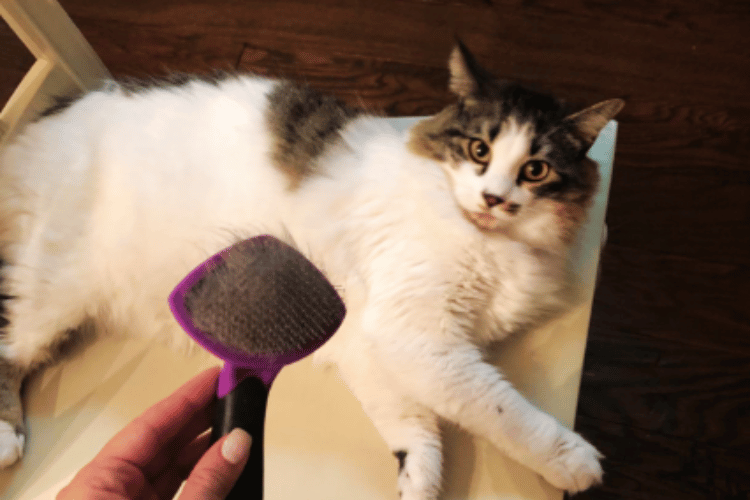
Choosing the Right Brush
Not all grooming tools are created equal. For short haired cats, a soft bristle brush or grooming glove might be sufficient to remove dirt and loose hairs. Long haired cats, however, may benefit from a combination of tools like a slicker brush for the topcoat and a metal comb for the undercoat hair.
Always start brushing with the least invasive tool. A flea comb can also be handy to check for any unwelcome guests while grooming. Remember, the right tool not only makes the grooming session more efficient but also more enjoyable for your cat.
Grooming Tools and Alternatives
When it comes to maintaining your cat's coat, the slicker brush is a popular tool, but it's not the only one. Combs, especially those with wide teeth, can be gentle alternatives for detangling your cat's hair without pulling on their skin. For cats that are not fond of slicker brushes, a 'zoom groom' rubber brush can be a game-changer.
These brushes are designed to mimic the pressure of your hand, making the grooming session feel more like a soothing massage. This can be particularly beneficial for cats that are sensitive or have a predisposition to anxiety during grooming sessions.
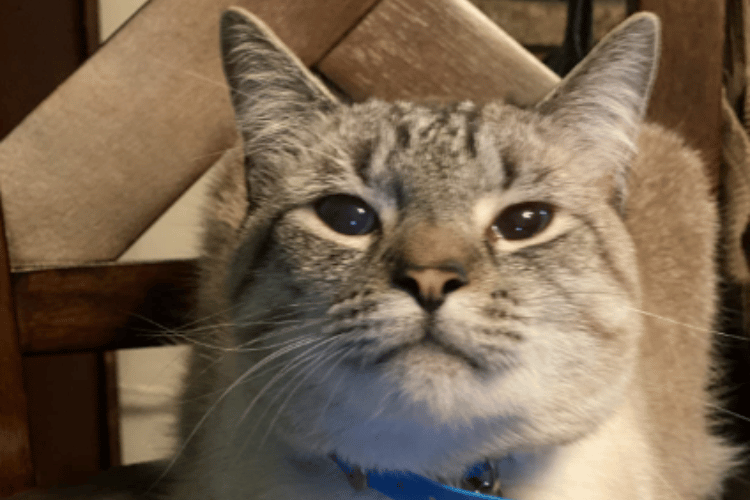
Another tool to consider is the grooming glove, which allows you to brush your cat by simply petting them. This can be a great way to collect loose hair while also providing your cat with a comforting touch. It's important to remember that while these tools are effective, they should be used in conjunction with regular brushing, especially for long hair cats, to prevent mats and tangles. Each tool has its place in a comprehensive grooming routine that helps maintain your cat's well-being.
Integrating Grooming into Your Cat's Routine
Integrating grooming into your cat's daily routine can contribute significantly to their overall well-being. Cats are creatures of habit, and establishing a regular brushing schedule can help them feel secure and cared for.
Start by associating grooming with positive experiences; for instance, groom your cat when they are in a relaxed state, perhaps after a meal or a playful session. This can help your cat to associate the act of grooming with feelings of contentment and safety.
Frequent brushing not only helps maintain your cat's coat by removing loose hair but also provides an opportunity to bond with your feline friend. Many cats grow to love the attention and may even start to look forward to these sessions. Pay special attention to areas like the tail and underarms, where knots can easily form.
Remember, self-grooming is a natural behavior for cats, so by assisting with regular brushing, you're complementing their innate habits and contributing to their hygiene and comfort.
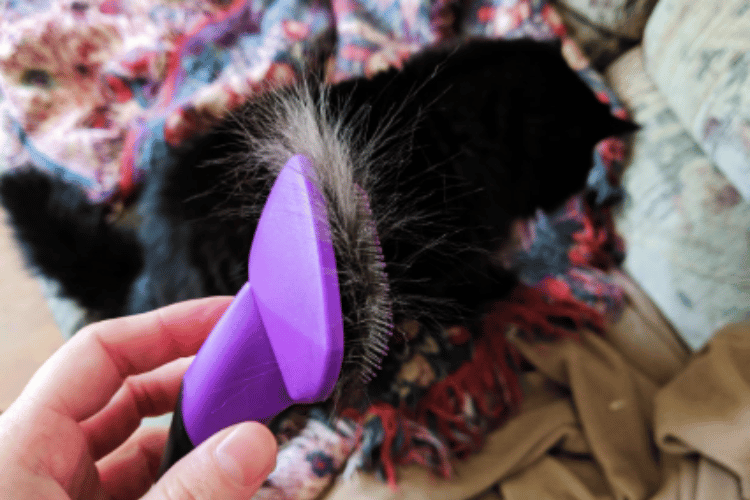
Signs of Over-Grooming
Over-grooming can lead to several health problems, including skin infections and bald patches. If you notice any unusual signs such as excessive licking, redness, or bald spots, it's time to reassess your grooming routine. Veterinary medicine professionals can offer guidance on how to address these issues and recommend a suitable grooming schedule.
Cats are self-grooming animals, and while they do a good job on their own, they still need our help to maintain a healthy coat. Be mindful of the natural oils in your cat's skin, which are essential for a shiny and healthy coat. Over-brushing can strip these oils, leading to dry skin and other skin issues.
The Benefits of Regular Grooming
Regular grooming is not just about keeping your cat's coat free of mats and tangles. It's also an opportunity to check for any lumps, bumps, or skin issues that may otherwise go unnoticed. Additionally, grooming helps distribute the cat's natural oils throughout their coat, keeping it shiny and healthy.
A grooming session is also a bonding time between you and your cat. Many cats love the attention and the sensation of being brushed. It's a chance to strengthen your relationship and ensure your cat's well-being.
Grooming Techniques for Success
When you start brushing, always be gentle and patient. Work through tangles slowly, and if you encounter mats, use a comb or mat splitter rather than pulling with a slicker brush. Reward your cat with treats and praise to associate grooming with a positive experience.
For cats that are not fond of grooming, start with short sessions and gradually increase the length as they become more comfortable. Always end on a high note, with lots of affection or a favorite treat, to leave a lasting positive impression.
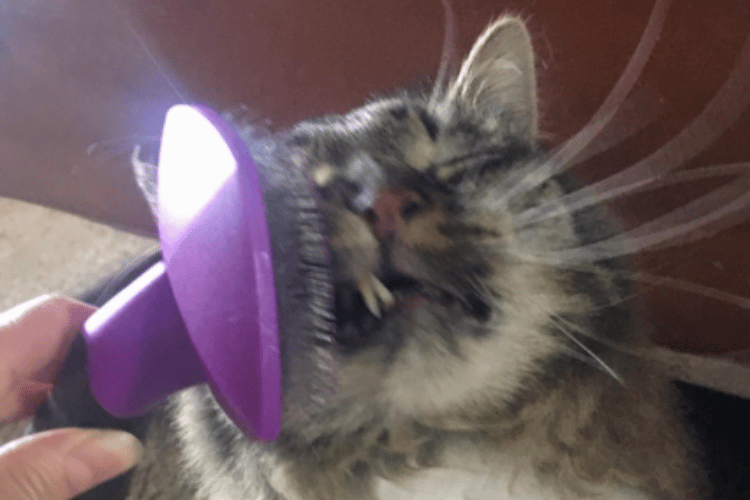
When to Seek Professional Help
If your cat's fur becomes too difficult to manage, or if you're unsure about the proper grooming technique, it's a big deal to seek professional help. Groomers and veterinarians can provide valuable tips and services to keep your cat's coat in tip-top shape without causing any harm.
Summary
In conclusion, while grooming is an essential aspect of caring for your cat, it is possible to use a slicker brush too much. The key is to tailor your grooming practices to your cat's specific needs, considering their coat type and personal preferences.
By being attentive and gentle, you can ensure that grooming remains a beneficial and enjoyable experience for your feline friend.
FAQ Section
How often should I brush my long haired cat?
Long haired cats typically require more frequent grooming to prevent mats and tangles. Aim for several times a week, but adjust based on your cat's tolerance and the condition of their coat.
Can over-brushing harm my cat's skin?
Yes, over-brushing can cause skin irritation, remove too much natural oil, and potentially lead to skin infections. It's important to brush gently and not more than necessary.
What should I do if my cat hates being brushed?
Start with short, positive grooming sessions, using treats and praise to create a positive association. Gradually increase the duration as your cat becomes more comfortable. If your cat continues to resist, consult a professional groomer or veterinarian for advice.
Thank you for visiting LegitLists we hope this helps you make a legitimate choice!






